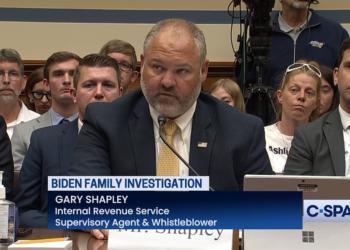Secondary tariffs on Russian oil from the Trump administration are expected to hurt primarily China and India if the president follows through with the threat.
Early Sunday morning, President Donald Trump told NBC News that he was considering placing secondary tariffs on all oil exported from Russia.
“That would be that if you buy oil from Russia, you can’t do business in the United States,” the president said. “There will be a 25% tariff on all oil, a 25-to-50-point tariff on all oil.”
The threat appears identical to the secondary tariffs to be implemented on Venezuelan oil on April 2. Trump announced the additional tariffs last week, explaining that any country that purchases oil or gas from Venezuela would be forced to pay a 25% tariff to engage in trade with the United States.
It is yet to be seen if the administration would copy-paste the Venezuelan order when issuing a similar one focused on Russia.
Energy economists and geopolitical analysts have said an identical secondary tariff order on Russia would have far greater implications globally, given the amount of oil the country continues to pump into the market.
“They’re kind of a nuclear card,” Clayton Seigle, a senior fellow in the Center for Strategic and International Studies program on Energy Security and Climate Change, told the Washington Examiner.
“They could provoke a very severe response from Russia,” he said of the possible tariffs, warning that it could lead to a major supply loss of Russian oil in the global market.
Seigle pointed to the existing Group of Seven nation price cap of $60 a barrel on Russian oil, saying it was intended to restrict the amount of money Russia could make through oil sales while not provoking “a major supply crisis whereby Russian oil really disappeared from the market.”
The price cap was implemented in 2022 as a response to Russia’s invasion of Ukraine. It has benefited importers of Russian oil, who have been able to purchase it for a lower price than they otherwise would.
While exports of Russian oil and oil products fell last year, revenue from the exports rose by about 2%, roughly $3.8 billion, according to the International Energy Agency. One likely reason for this is the selling of oil and oil products above the price cap using the country’s so-called shadow fleet of tankers.
In January alone, about 66% of Russian crude oil and oil products were transported by sea via these “shadow tankers,” getting around the oil price cap policy and other sanctions, according to data compiled by the Centre for Research on Energy and Clean Air.
China and India are widely considered to be the largest importers of Russian oil and oil products, with other nations, such as Turkey and Brazil, not far behind.
If the U.S. implemented secondary sanctions, these countries would likely bear the brunt of the impact — depending on the specifics of the order.
Philip Luck, former deputy chief economist at the State Department under former President Joe Biden and current director of the CSIS Economics Program and Scholl Chair in International Business, told the Washington Examiner that the current administration may choose not to be as sweeping with the possible tariffs.
For example, Luck said, the administration might only implement the tariff on those purchasing Russian crude and oil products above the existing price cap, similar to previously imposed sanctions. This would allow Russian oil to continue to hit the market, lowering global risk.
“From an economic standpoint, as long as this oil hits the market, that’s all to the good. And if we can, through our leverage, actually reduce the price of Russian oil, that actually would reduce global oil prices,” Luck said.
“If this can work, it would honestly tick a lot of boxes for this administration. It would increase pressure on Russia to negotiate. It would potentially reduce oil prices,” he said. “It would put more pressure on India and China to adhere to the oil price cap, which we’ve been wanting them to do for a long time.”
While the administration has yet to release more information on the secondary tariffs, Trump allies have praised the administration for turning more to economic tactics to end Russia’s war in Ukraine.
“The options for handling recalcitrant international actors are war or financial pain of one sort or another. There’s no future in war with nuclear-armed Russia, but there is in financial pain. The secondary tariffs on Russia’s oil customers will be next-level financial pain for Putin,” Steve Milloy, a senior legal fellow with the Energy and Environmental Legal Institute and former Trump EPA transition team member, told the Washington Examiner in a statement.
TRUMP STEEL TARIFFS CONFLICT WITH ‘DRILL, BABY, DRILL’ SENTIMENT
“I credit President Trump for attempting to solve the Russia-Ukraine problem with peaceful economic tactics versus unending arms sales leading to World War I-style trench warfare and senseless killing,” Milloy continued.
The Treasury Department did not respond to the Washington Examiner’s request for comment.














